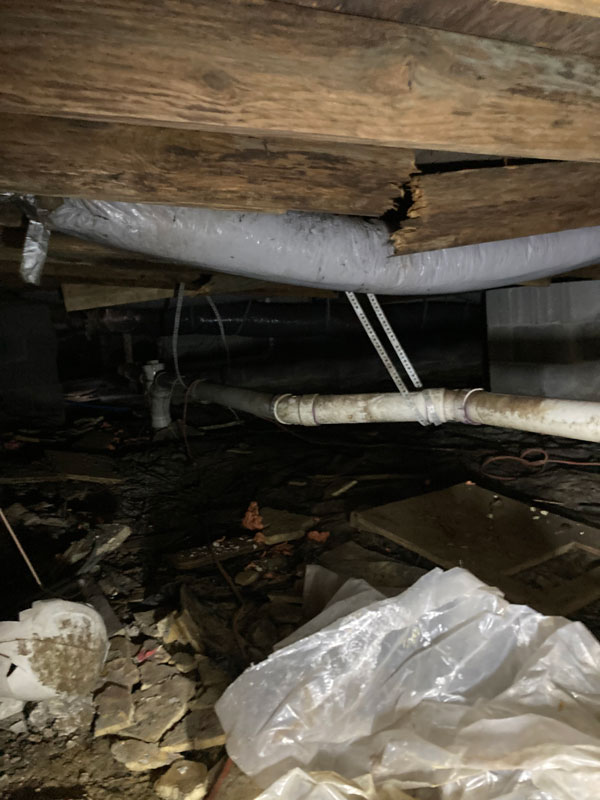
Expert Tips for Preventing Mold in Crawl Spaces
Crawl areas are often overlooked until a major issue arises. This hidden portion of the home, comprising dark, wet, and poorly aired subterranean spaces, is prone to mold growth. If unmanaged, this mold can spread swiftly, causing odors, building damage, and health issues for residents. Mold can be prevented by improving the crawl space and preventing dampness. Create a dry and balanced space to protect the foundation and indoor air quality.
Moisture Control is the Foundation
Mold grows from moisture; therefore, controlling moisture is the first step. Air in crawl areas is wet and stagnant due to ground and soil humidity. Water vapor from the ground or plumbing leaks creates a great breeding habitat. Addressing water sources directly reduces mold growth. Other enhancements will only yield partial effects without this step.
One of the best ways to decrease moisture is via a vapor barrier. A heavy-duty plastic barrier covers the crawl area floor to prevent water vapor from rising. Sump pumps may be advised for homes with groundwater issues. These remedies eliminate mold-promoting circumstances, making them a potent mold defense. A clean, dry crawl area is less likely to cause long-term damage.
Ventilation and Airflow Matter
Airflow is important for crawl space health. Without it, humidity and mold grow quickly. Sealed crawl spaces trap damp air, providing mold’s ideal environment. Increased ventilation reduces humidity and growth. Without circulation, tiny leaks or humidity can become ongoing issues.
Crawl space dehumidifiers can improve some homes. These units maintain safe relative humidity by continuously removing moisture. Air exchange can be encouraged by properly sized vents or mechanical ventilation systems. When moisture is removed and air flows, mold struggles to grow. A more stable environment supports the building above rather than harming it.
Insulation and Temperature Control
Condensation from crawl space temperature variations contributes to mold. Droplets form when warm air hits cooler surfaces like pipes or foundation walls, creating moist areas. These areas become mold-friendly over time. Insulation reduces condensation and keeps surfaces dry. This reduces mold spores throughout the space.
Foundation walls and rim joists can be lined with rigid foam or spray foam. This lowers condensation and maintains crawl space temperature. Insulated pipes and ducting prevent moisture buildup. Balancing insulation, vapor barriers, and ventilation reduces mold growth. Energy efficiency increases, lowering utility expenses over time.
Keep an Eye on Drainage Outside
Outside the home, many crawl space issues begin. Poor yard grading, clogged gutters, and short downspouts can pool water around the foundation. This moisture eventually enters the crawl space and raises humidity. These difficulties must be prevented outside to maintain stability inside. Taking care of drainage can make a big difference in the health of your crawl space.
Adding downspouts several feet from the foundation or sloping the dirt away from the home can make a difference. Gutters need regular cleaning to drain water efficiently. Installing a French drain system may channel groundwater. Fixing drainage at the source lowers crawl space wetness, thus giving mold fewer early growth chances.
Routine Inspections Build Long-Term Protection
Crawl spaces require maintenance, even when they are well-designed. Regular inspections catch tiny issues before they become big ones. Mold activity might be detected by musty odors, moist insulation, or wood beam discoloration. These indications can be detected early to save time and money. Early detection helps manage mold on large surfaces.
Professionals test humidity, leaks, and vapor barrier wear and damage. Annual crawl space checks help homeowners avoid worse issues brought on by carelessness. Mold grows when ignored, but suffers from consistent inspections. Having the crawl space maintained year-round gives you confidence.
When Professional Help Becomes Necessary
Some subterranean areas acquire mold despite the greatest efforts due to peculiar or long-standing circumstances. When growth is visible, professional cleanup is safer. Professionals use proven procedures to remove mold and sanitize and protect the environment. A large mold problem may be incompletely treated without the correct instruments and skills. Only proper removal prevents regrowth.
Prevention follows remediation. Experts may recommend crawl space encapsulation to permanently seal air and moisture. With dehumidifiers, these devices prevent mold. Protecting investments and living well requires professional help. Consultation is usually the best next step for lifelong protection.